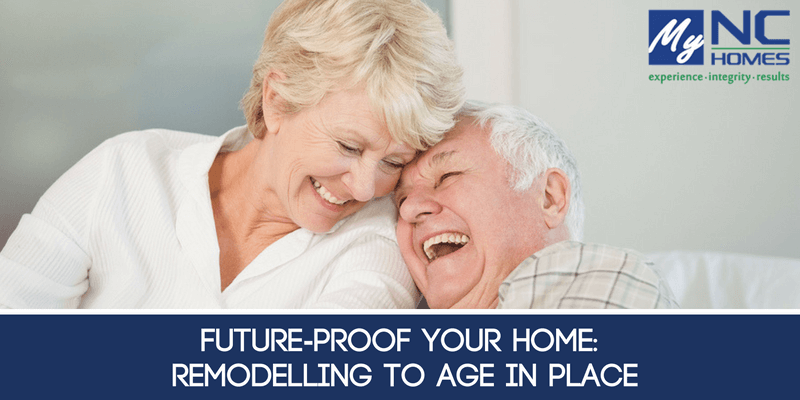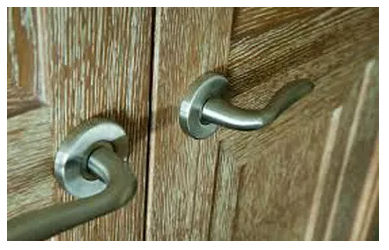
When it comes to retirement, there are a lot of things people look forward to, like golf, travel and hobbies. But they don’t look forward to moving into assisted living facilities. Many prefer to "age in place" and stay in their existing homes as long as possible.
 This may sound like a daunting, expensive proposition, but a little planning can go a long way, according to Joe Norwood, owner of Manor House Renovations. "People don’t want to move from their home when they retire," said Norwood. "But most aren’t proactive when it comes to future-proofing their homes as they age."
This may sound like a daunting, expensive proposition, but a little planning can go a long way, according to Joe Norwood, owner of Manor House Renovations. "People don’t want to move from their home when they retire," said Norwood. "But most aren’t proactive when it comes to future-proofing their homes as they age."
Joe Norwood is a "Certified Aging in Place Specialist" and Manor House Renovations is one of the Triangle area’s leading home remodeling companies, focusing on modifying homes to help people with mobility challenges stay in their homes longer.
When people get into their mid-to-late 50s, and retirement is in view, many start thinking about their homes and long term plans. Some want to downsize or start planning to move to be closer to their kids/grandchildren; but many love the home they’re living in but realize it may not work well for them as they continue to age. However, with some strategic planning and some clever modifications, remaining in your existing home is perfectly viable in many cases.
Typically, this means redesigning the home’s floor plan to include wider doorways and halls, more accessible kitchens and baths, and easy-to use entries. While renovations of this nature can be expensive, that extra cost can usually be absorbed into the overall renovation budget. "If you’re going to do the renovation anyway, why not plan ahead?"
As our population ages, a future-proofed renovation also adds to the value of a home, said Norwood. "These homes will be in higher demand," he said.
Norwood added there are also some things homeowners can do on their own to immediately make their homes more accessible.
Natural Lighting
As people get older, their vision usually deteriorates. According to Norwood, people often make the mistake of getting higher wattage bulbs when what they really need are bulbs that simulate natural sunlight. These readily available bulbs are easier on the eyes than conventional fluorescent and LED bulbs.
Swap Out Round Door Handles
Most interior door handles are the familiar knobs, so Norwood recommends lever-style door handles, which are easy for  everyone to use. Grasping and turning these can be increasingly difficult for people who have arthritis, so try to avoid handles that require hand strength to turn them.
everyone to use. Grasping and turning these can be increasingly difficult for people who have arthritis, so try to avoid handles that require hand strength to turn them.
Replace Complicated Faucets
Like door knobs, lever-style kitchen, bath and shower faucets are simple for anyone to turn on and off and adjust the temperature. Taking it a step further, Norwood recommends motion-sensing faucets that turn on with just a wave of the hand. Once found only in commercial applications, these faucets are now offered in residential designs and finishes.
Chair Height Toilets
Conventional toilets are usually a few inches lower than the standard height of chairs, which makes it difficult for people who use wheelchairs or have limited knee flexibility. Many manufacturers now offer higher toilets that are easier to use and more comfortable for everyone.
Install Grab Bars
Bathroom grab bars are often the last thing people want to put in their homes, because they look sterile and institutional. But residential models are available in designs and finishes that complement the other fixtures in the room.
According to Norwood, planning ahead and future-proofing your home is one of the best things you can do, even if you don’t have any mobility challenges. Not only can it improve the resale value of your home, but it can also pay for itself by delaying or even eliminating the need to move into a retirement home.
Assisted living facilities can cost as much as $8,000 a month," said Norwood. "At that price, even a major remodel would pay for itself in just a few months".
Most importantly, Norwood added, future-proofing your home puts your mind at ease. "Mental wellness is just as important as physical wellness," he said. "People have fond memories of their homes and want to stay in them as long as they can. Knowing they won’t have to move to a facility gives them peace of mind."
Posted by Larry Tollen on
Leave A Comment